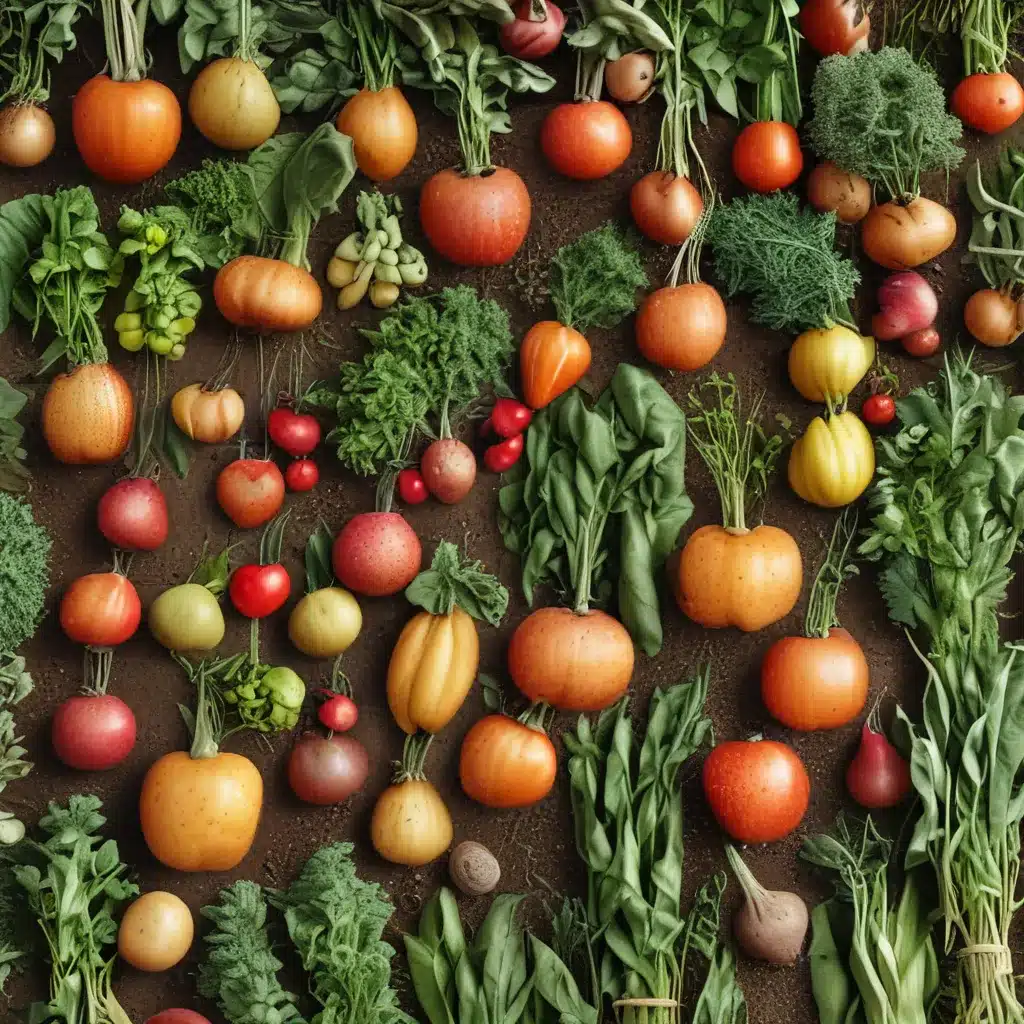
The Produce Paradox: Enhancing Nature’s Gifts
As I strolled through the vibrant aisles of my local Thornalppe CSA farm stand, the abundance of fresh, organic produce before me was truly awe-inspiring. Baskets overflowing with crisp, leafy greens; heirloom tomatoes in a rainbow of colors; and fragrant, just-picked herbs – each item a testament to the hard work and dedication of the farmers who nurtured these natural wonders.
Yet, as I admired the visual splendor, a nagging question crept into my mind: How can we ensure that this organic bounty retains its maximum nutritional value, so that our bodies can truly reap the benefits? It’s a conundrum that has puzzled health-conscious consumers and food enthusiasts alike. After all, aren’t organic foods supposed to be inherently more nutritious? The answer, it turns out, is a bit more complex.
The Organic Advantage: Unlocking Nature’s Potential
The superiority of organic produce is well-documented. Studies have shown that organically grown fruits and vegetables contain higher levels of essential vitamins, minerals, and antioxidants compared to their conventionally grown counterparts. This is largely due to the absence of synthetic pesticides and fertilizers, which can strip away valuable nutrients. Organic farming methods also promote healthier soil, which in turn nourishes the plants and enables them to reach their full nutritional potential.
However, the journey from farm to fork is fraught with potential pitfalls. Processing, storage, and even cooking methods can all have a significant impact on the nutritional content of our organic produce. It’s a bit like a high-stakes game of “Produce Tetris,” where we have to strategically navigate the various stages to ensure that those hard-earned nutrients make it to our plates intact.
Maximizing Nutritional Value: The Art of Organic Optimization
So, how can we, as health-conscious consumers, ensure that we’re truly getting the most out of our organic investments? The answer lies in understanding the science behind nutrient preservation and applying a few simple, yet effective, techniques.
Mastering the Extraction Process
The first step in the optimization process is to maximize the extraction efficiency of our organic produce. This is where the concept of “Recovery Percentage” comes into play. Recovery Percentage (RP) is a crucial metric that measures the amount of usable product obtained from the raw materials. A high RP indicates that the processing methods are effectively extracting the maximum amount of valuable nutrients from the organic ingredients.
To achieve a high RP, modern food processing units are employing advanced extraction technologies, such as high-pressure processing, supercritical fluid extraction, and membrane filtration. These methods are designed to maximize yield while preserving the nutritional and sensory qualities of the produce. Additionally, continuous monitoring and optimization of processing parameters, like temperature, pressure, and pH, can lead to even higher recovery rates.
Optimizing the Transformation Process
But the journey doesn’t end there. Once the valuable nutrients have been extracted, the next step is to ensure they are effectively transformed into the final product. This is where the “Conversion Percentage” (CP) comes into play, measuring the efficiency with which raw materials are converted into finished goods.
High CP means that a large proportion of the organic raw materials are being transformed into the final product with minimal losses. This encompasses not just the extraction process, but the entire transformation, including any changes in form, composition, or state. Integrating processes that recover by-products and convert them into value-added products can further enhance the CP, reducing waste and promoting sustainability.
Mastering the Art of Preservation
Even after the extraction and transformation processes have been optimized, there’s one more crucial step in the organic optimization journey: preservation. The way we store, transport, and prepare our organic produce can have a significant impact on its final nutritional value.
For example, did you know that exposing leafy greens to light can cause a rapid degradation of their vitamin C content? Or that certain cooking methods, like boiling, can leach out water-soluble vitamins? By understanding these nuances and adapting our handling and preparation techniques accordingly, we can ensure that those hard-earned nutrients make it to our plates intact.
The Organic Optimization Equation: A Holistic Approach
Ultimately, the key to maximizing the nutritional value of our organic produce lies in a holistic, multifaceted approach. It’s not enough to simply purchase organic – we must also be mindful of the various stages our produce undergoes, from farm to table.
By mastering the art of extraction, transformation, and preservation, we can unlock the full potential of our organic investments and enjoy the bounty of nature’s gifts in all their nutrient-dense glory. It’s a delicate dance, to be sure, but one that’s well worth the effort for the health and well-being of ourselves and our loved ones.
So, the next time you visit your local Thornalppe CSA farm stand, take a moment to appreciate the journey your organic produce has taken. With a bit of knowledge and a lot of love, you can ensure that those vibrant, flavorful offerings are not just a feast for the senses, but a true nourishment for your body and soul.



